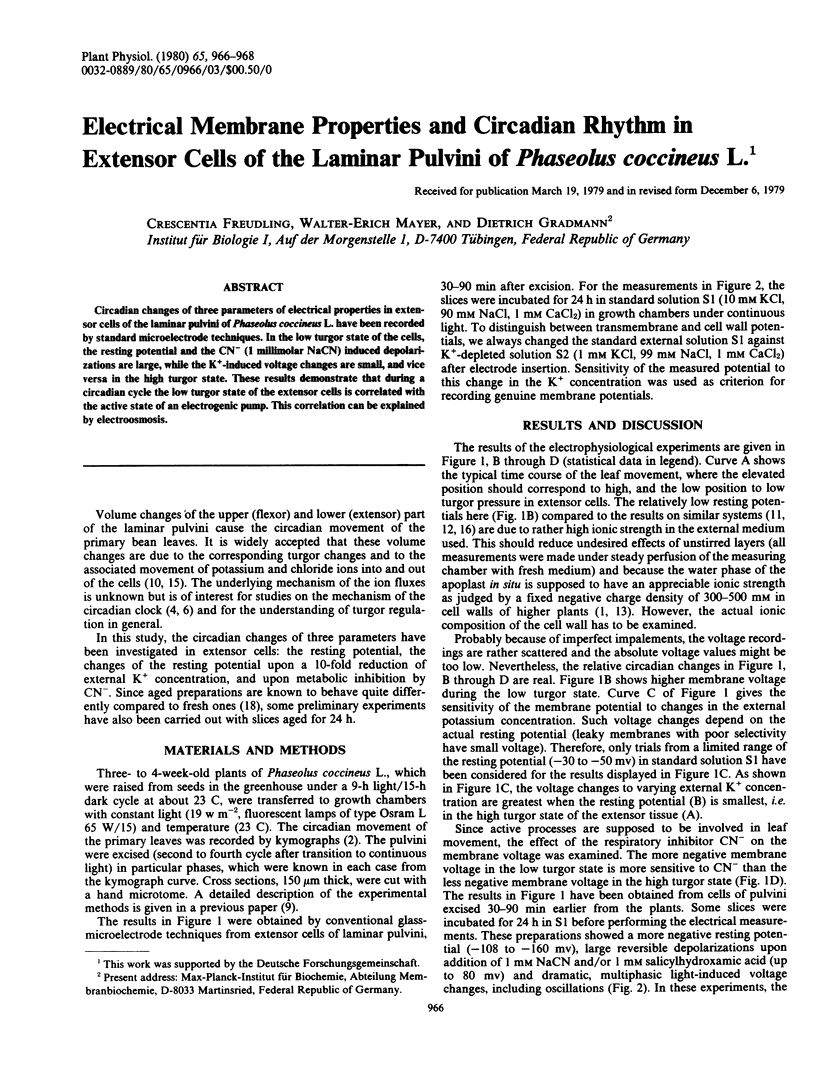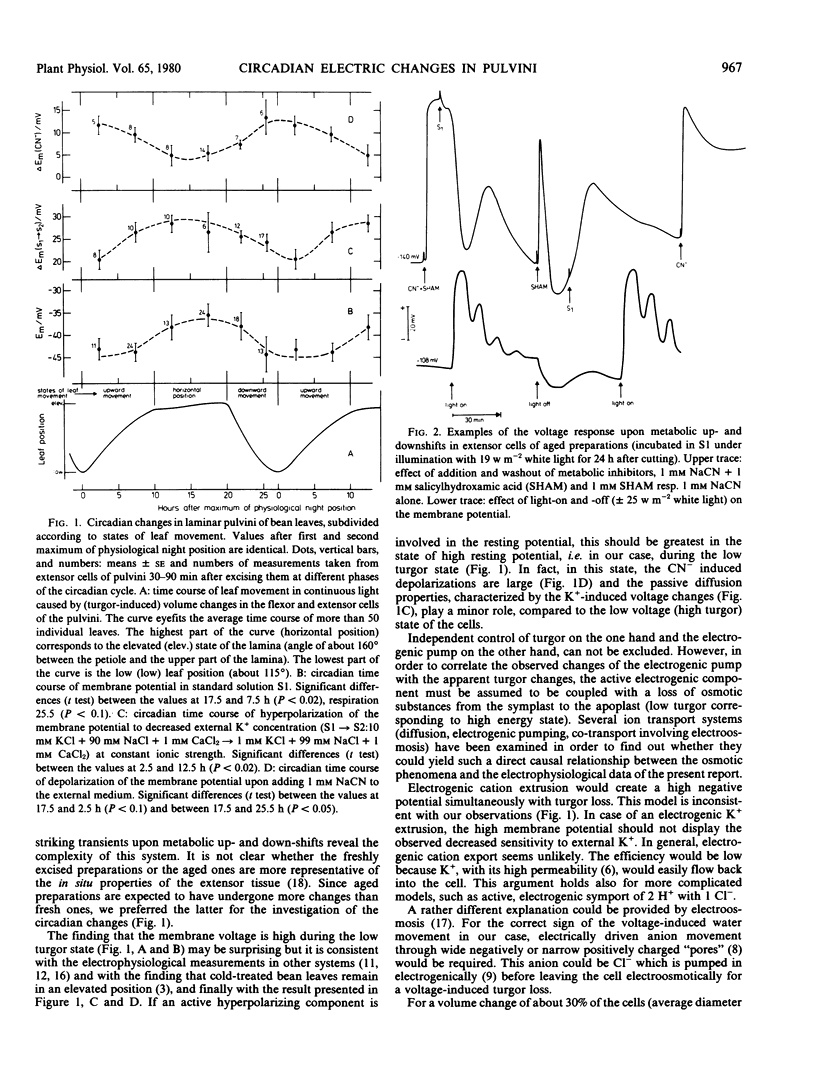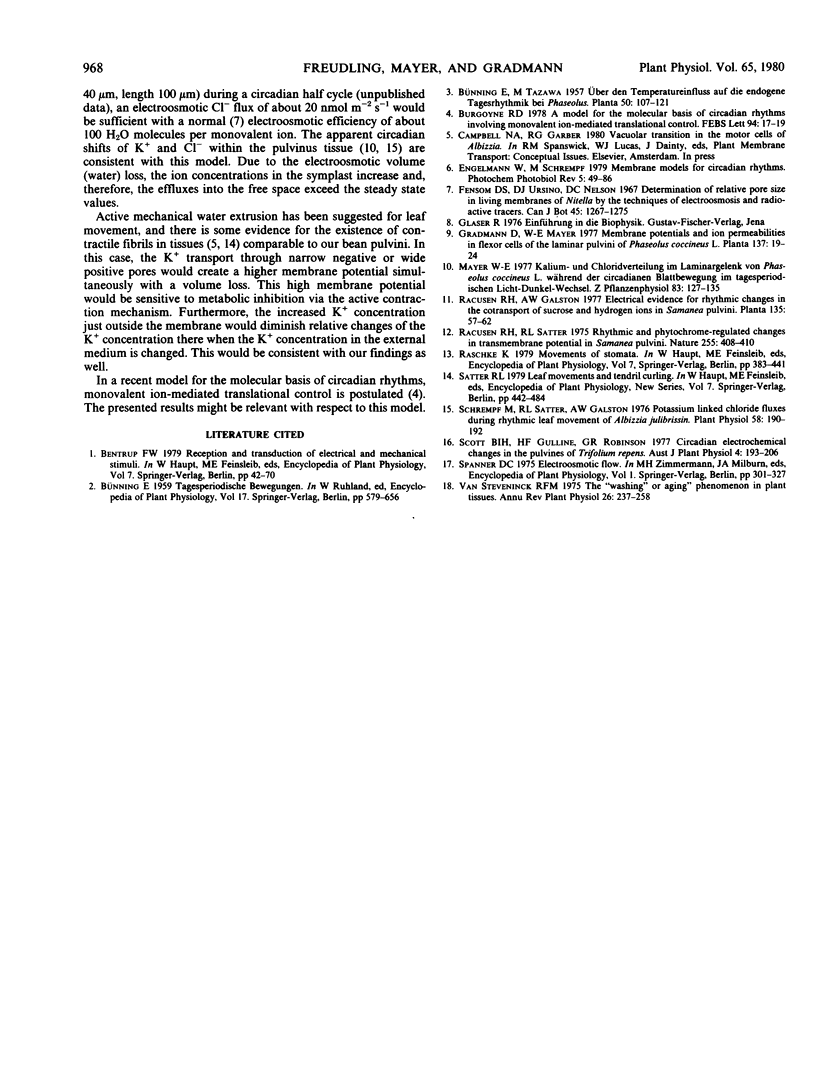Abstract
Circadian changes of three parameters of electrical properties in extensor cells of the laminar pulvini of Phaseolus coccineus L. have been recorded by standard microelectrode techniques. In the low turgor state of the cells, the resting potential and the CN− (1 millimolar NaCN) induced depolarizations are large, while the K+-induced voltage changes are small, and vice versa in the high turgor state. These results demonstrate that during a circadian cycle the low turgor state of the extensor cells is correlated with the active state of an electrogenic pump. This correlation can be explained by electroosmosis.
Full text
PDF


Selected References
These references are in PubMed. This may not be the complete list of references from this article.
- Burgoyne R. D. A model for the molecular basis of circadian rhythm involving monovalent ion-mediated translational control. FEBS Lett. 1978 Oct 1;94(1):17–19. doi: 10.1016/0014-5793(78)80896-5. [DOI] [PubMed] [Google Scholar]
- Racusen R., Satter R. L. Rhythmic and phytochrome-regulated changes in transmembrane potential in samanea pulvini. Nature. 1975 May 29;255(5507):408–410. doi: 10.1038/255408a0. [DOI] [PubMed] [Google Scholar]
- Schrempf M., Satter R. L., Galston A. W. Potassium-linked Chloride Fluxes during Rhythmic Leaf Movement of Albizzia julibrissin. Plant Physiol. 1976 Aug;58(2):190–192. doi: 10.1104/pp.58.2.190. [DOI] [PMC free article] [PubMed] [Google Scholar]


